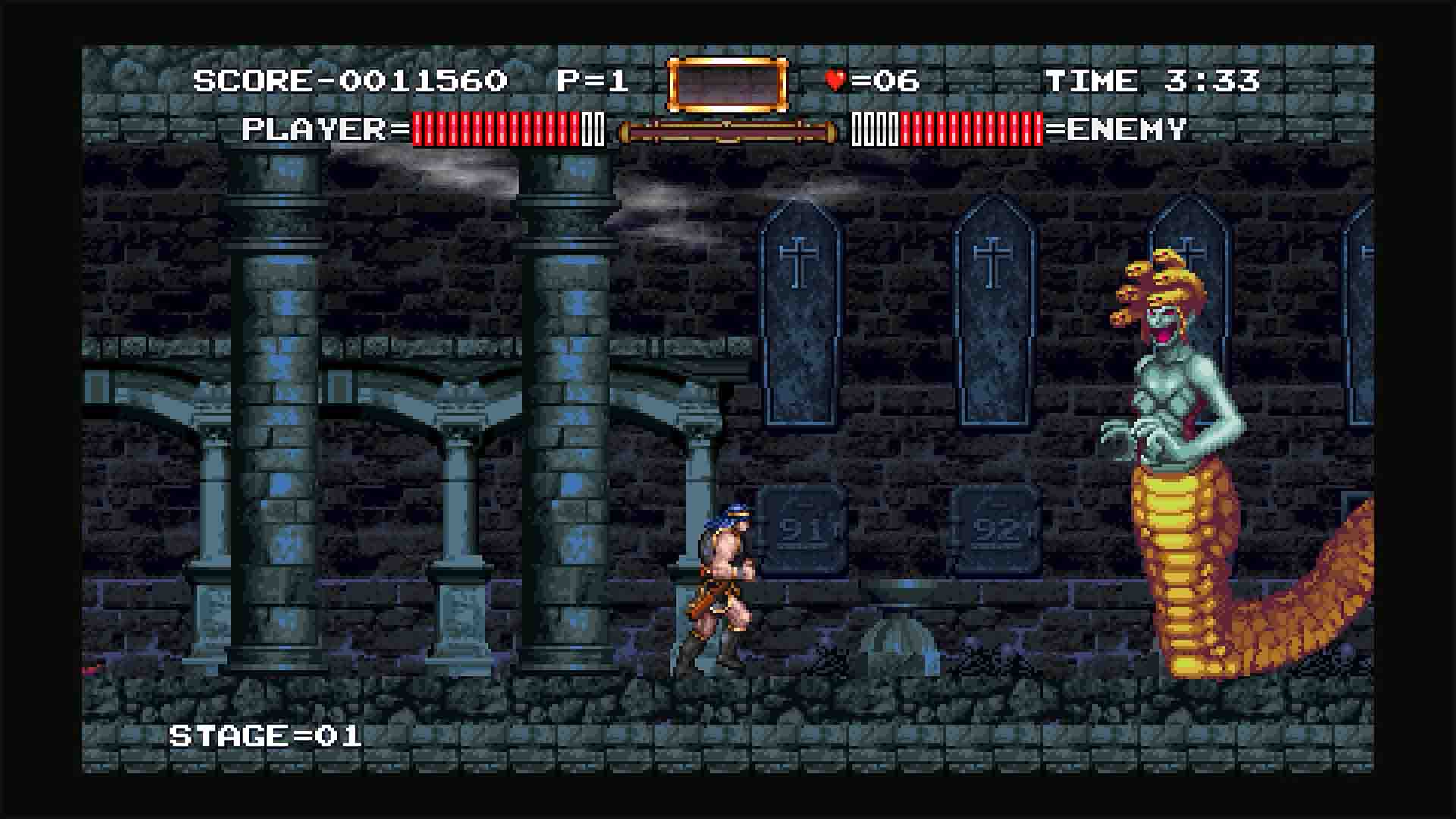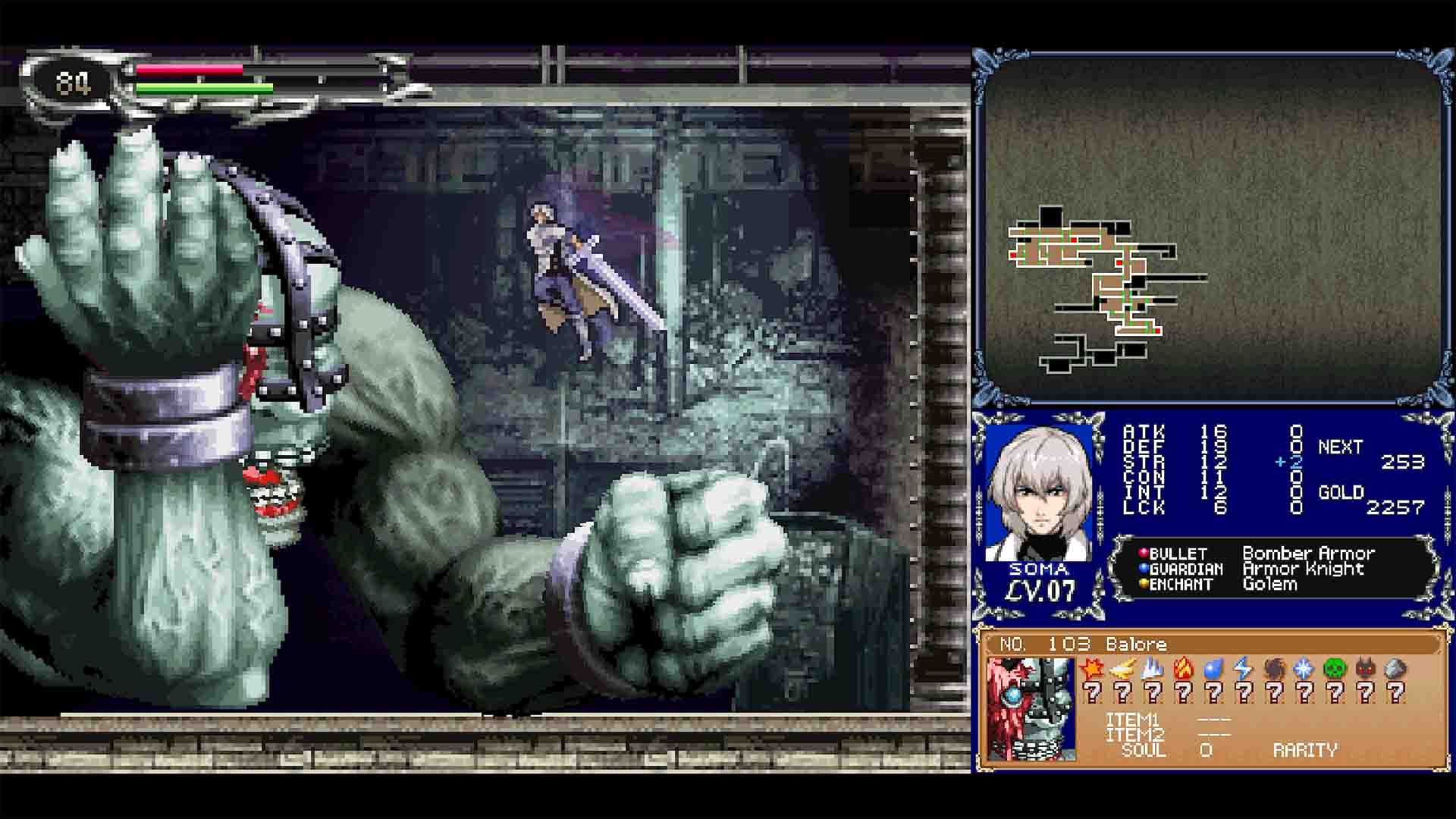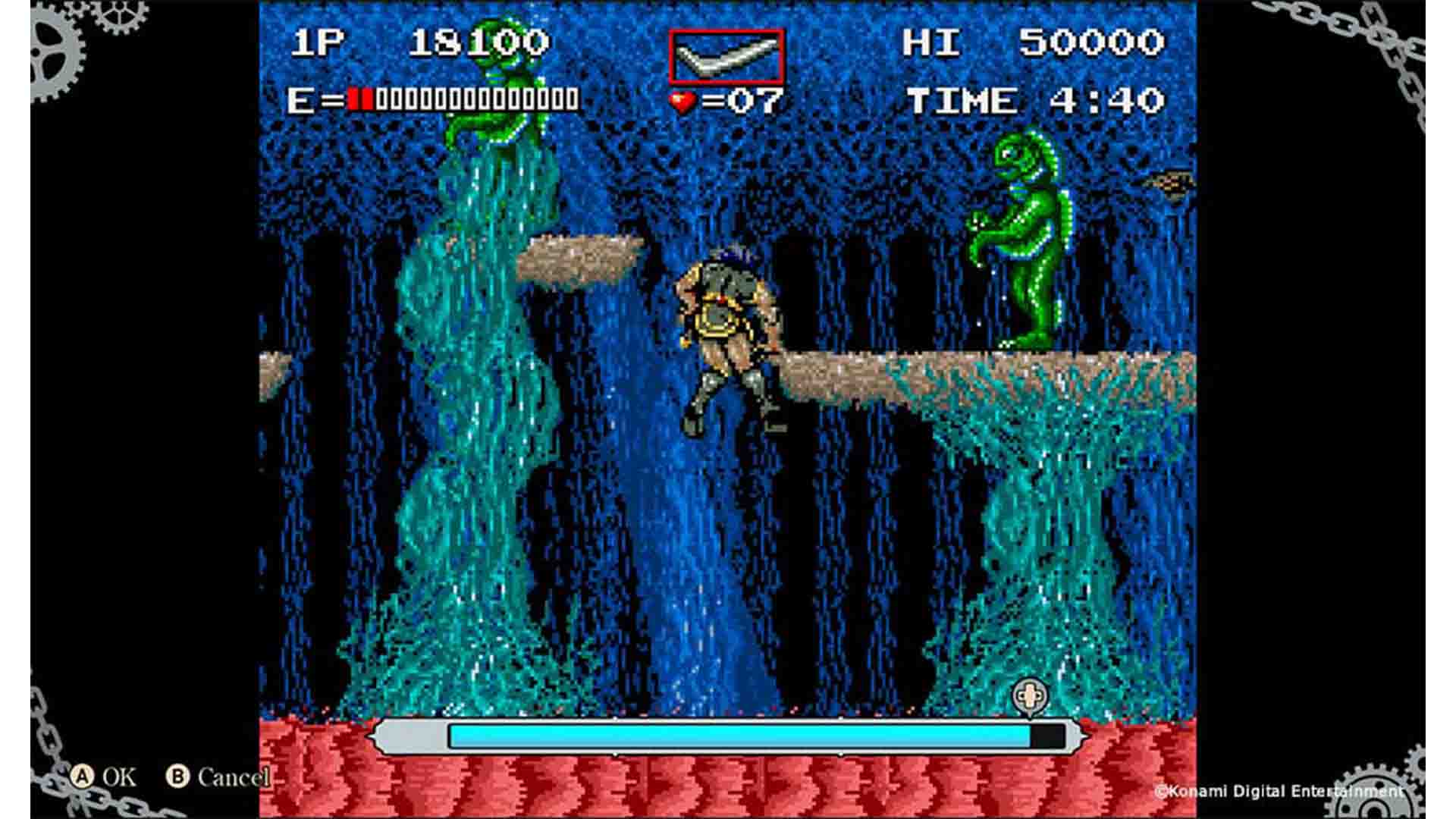The Castlevania Dominus Collection review
Everyone always says that Castlevania: Symphony of the Night being one of the best games of all-time, and quite rightly. Along with Super Metroid it pretty much defined a genre within itself, whilst developing a rich new vein of vampiric lore for the undead-killing Konami franchise. It is fair to say that the publisher did return to the well quite a bit in ensuing years, with well-documented and equally well-received GameBoy Advance instalments following. But the trio of Nintendo DS Castlevania titles were a truly golden time for the series and probably garnered more of my gaming time than any of the others over the years. Something about the legendary Dual Screen clamshell and touch controls hit different and I spent countless hours ensuring I bled every possible secret from their wares.
The Castlevania Dominus Collection including that very triumvirate does a fine job, some may say against the odds given the fact that the developer has had to make do with a single screen as opposed to the twin displays of the original hardware. This is circumvented by a few different video options. As standard the main action is displayed in a large box on the left-hand side, with the map and statistical analysis stuff stacked on top of each other over to the right. This worked perfectly well for me using a Steam Deck, too. If you want to replicate the original DS layout you can, however when using a portable display it reduced everything down in size quite considerably. You can also swap the display tiles around to your own liking, but for most players the way it looks when you first fire it up should do the trick.

Oddly, the three DS titles are presented in reverse chronological order on the title screen in The Castlevania Dominus Collection, with the 2008 Order of Ecclesia first, followed by Portrait of Ruin (2006), and finally Dawn of Sorrow (2005). Even though there are similarities and even some repetition in places across these Koji Igarashi-produced games, they all have their own individual selling points and play in distinctly different ways. Like many early DS games, Dawn of Sorrow leans into the touch screen controls as its main gimmick, even having a name that is a knowing nod to the name of the console.
Here, the anime-styled hero Soma Cruz uses a “Magic Seal” technique which involves drawing symbols on the screen in order to finish off bosses. The touch screen controls on the original game could be hit and miss, and you could say the same here. I was playing on Steam Deck and therefore able to draw the symbols with my finger, but the technique doesn’t always behave how you want it to, which is why one of the in-built quality of life additions to the package, the ability to rewind the action, came in handy. If you don’t fancy touch controls or indeed are playing on a mainline console, then you can also draw stuff by holding down a trigger and dragging a cursor.

Portrait of Ruin eschews much of the touch elements and introduces a second playable character, with the ability to switch in real-time and combine to perform special abilities and solve puzzles. The haunted gallery painting motif is excellent and allows the player to visit a number of stunning and diverse locales. It is another sublime platform role-player.
Rounding things off is Order of Ecclesia. This was the last of the true exploratory platform lineage that began with Symphony of the Night, and I can vividly recall being somewhat disappointed by this one when it first arrived, as compared to the other two it seemed so much more linear and straightforward. Nonetheless it still has a lot to recommend it, including a very well-received and super-strong female lead and an interesting Glyph system which allows you to experiment with a variety of different attack, magic and buff combinations. Fact nerds may also be interested to hear that this one was the first in the entire series’ history not to feature a variation on the classic Vampire Killer whip.
As a cheeky and very welcome bonus, Konami has also handed us the first “new” game in the Castlevania oeuvre for many years in the form of a completely overhauled remake of the clunky yet nostalgic 1987 coin-op, Haunted Castle. The three main titles included here would have been more than enough, so the fact the publisher has really gone to town on producing such a winsome and well-crafted reimagining makes this package excellent value.

If the three DS bangers have aged well, right down to their expertly drawn sprites and typically lush Castlevania aural experience, then Haunted Castle has aged just as you would expect a coin-guzzling arcade machine from the 1980s to have. Essentially a version of the classic original NES Castlevania, it is uncompromisingly difficult, with segments even on the very first stage capable of making you tear your hair out in frustration. It is nice, if a little incongruous to have it included, but isn’t one I would recommend. The Revisited do-over, however, is terrific.
The graphical style has been overhauled but without making it look too modern and weird (think: the duff recent ActRaiser). It would not look out of place on one of the 16-bit consoles, but has just the right amount of latter day polish and trickery to make it really sing. The punishing difficulty is thankfully a thing of the past, and it sustains a decent challenge over its course with new collectible weapons, more frequent power ups, and less ridiculously cheap enemies and obstacles. It isn’t going to rival Super Castlevania IV or Rondo of Blood any time soon, but it is a typically classy effort.
That class extends to the options and extras on Dominus. There are some lavish collections of artwork to peruse, something that I wholeheartedly recommend as Castlevania has some of the most beautiful game art design ever, with this package showcasing its effortless combination of gothic vampire horror and more modern anime design. This fan service extends to a music gallery, and the ability to play the games in multiple different regional versions. There isn’t much more you could have asked for, unless you wanted to be really greedy and ask that Symphony of the Night had been included, but you can’t have it all.




